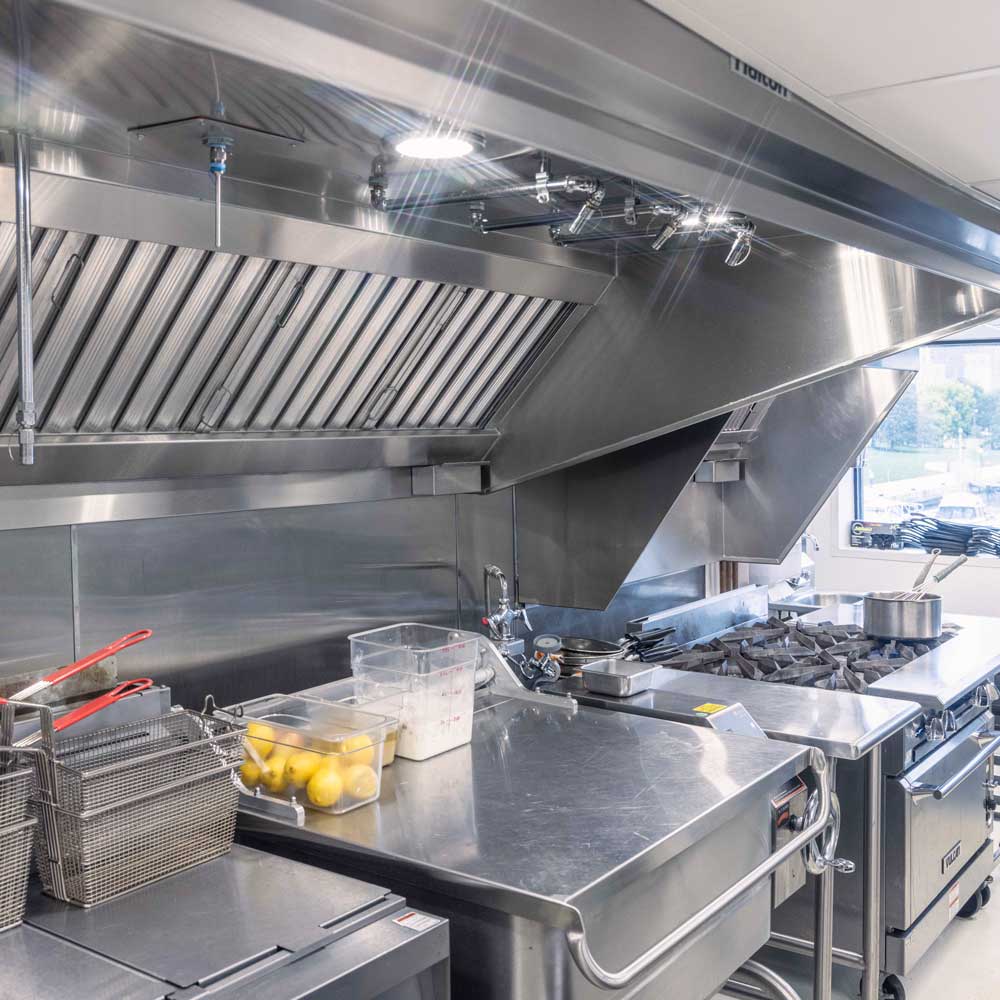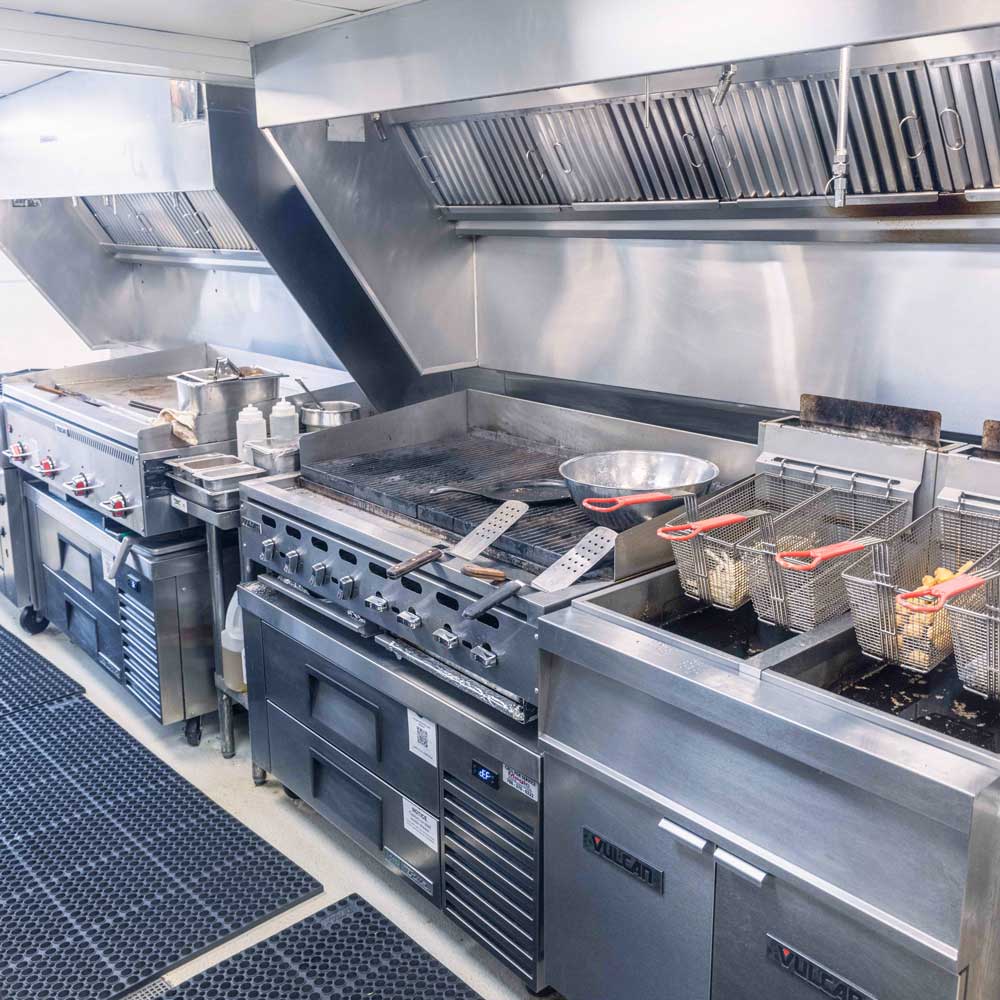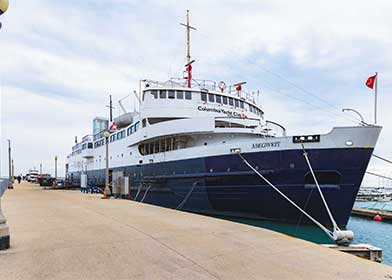
A FLOATING KITCHEN: RENOVATING THE FOODSERVICE SPACE OF COLUMBIA YACHT CLUB
Location:
Chicago, IL
Scope:
Design, Equipment Supply & Installation, Supplies
For a few days in the spring of 2023, people driving down Lake Shore Drive in Chicago, IL, got a sight not often viewed on this busy city street – a crane lifting crates of equipment onto a large ship docked in Lake Michigan. It was all part of a major kitchen renovation for Columbia Yacht Club, no small feat in the hull of a ship. The team at Boelter partnered with the architectural firm, general contractors and consultant Clevenger Associates to work on a design that fit the needs of the club while overseeing the project from start to finish.
The Columbia Yacht Club makes its home on the MW Abegweit, a ship that served as an ice-breaking vehicle and passenger ferry in Canada from 1947-1982. When it was retired and put up for sale, the yacht club bought the ship. It has been docked in Lake Michigan since 1983, serving as a gathering place and event center for forty years. Over time, the club’s needs have outgrown the ship’s kitchen. Members became frustrated with the time it took to get served during lunch and dinner, and the addition of a party tent able to host up to 200 people put even more strain on the kitchen.
Getting Creative in a Small Space
The renovation took what was a traditional galley kitchen and transformed it into a two-sided kitchen. The new space is designed with a bank of equipment in the middle, with workspaces on each side, one for meal service and one for events. This allows the staff to work on separate projects without getting in each other’s way, while sharing equipment to take full advantage of efficiency and production capabilities in a small space.
It’s always a bit of a challenge to redesign a kitchen, having to work around existing infrastructure. But in the ship’s hull the area was more cramped than most kitchen spaces, thanks to a short ceiling height and a steel structure that serves as support and couldn’t be knocked out like you can with walls in a traditional building. Boelter’s Ralph Aylward, designer, and Matt White, project manager, brought years of experience to the job that helped create a space to fulfill the client’s needs.

Versatile Equipment Choices. The centerpiece of the new kitchen is a bank of three full-size combi-ovens. Previously the kitchen had just one under-counter electric oven, so the new equipment proved to be a game-changer in terms of getting a higher volume of food out fast. It also allows for versatility in menu creation. And the ventless, electric combi-ovens were a perfect fit for the ship’s kitchen where hood space is at a premium and gas is not an option. Other new additions to the kitchen include a tilting braising pan, one of the most versatile pieces of equipment available, according to Matt White, a four-burner range and two fryers.
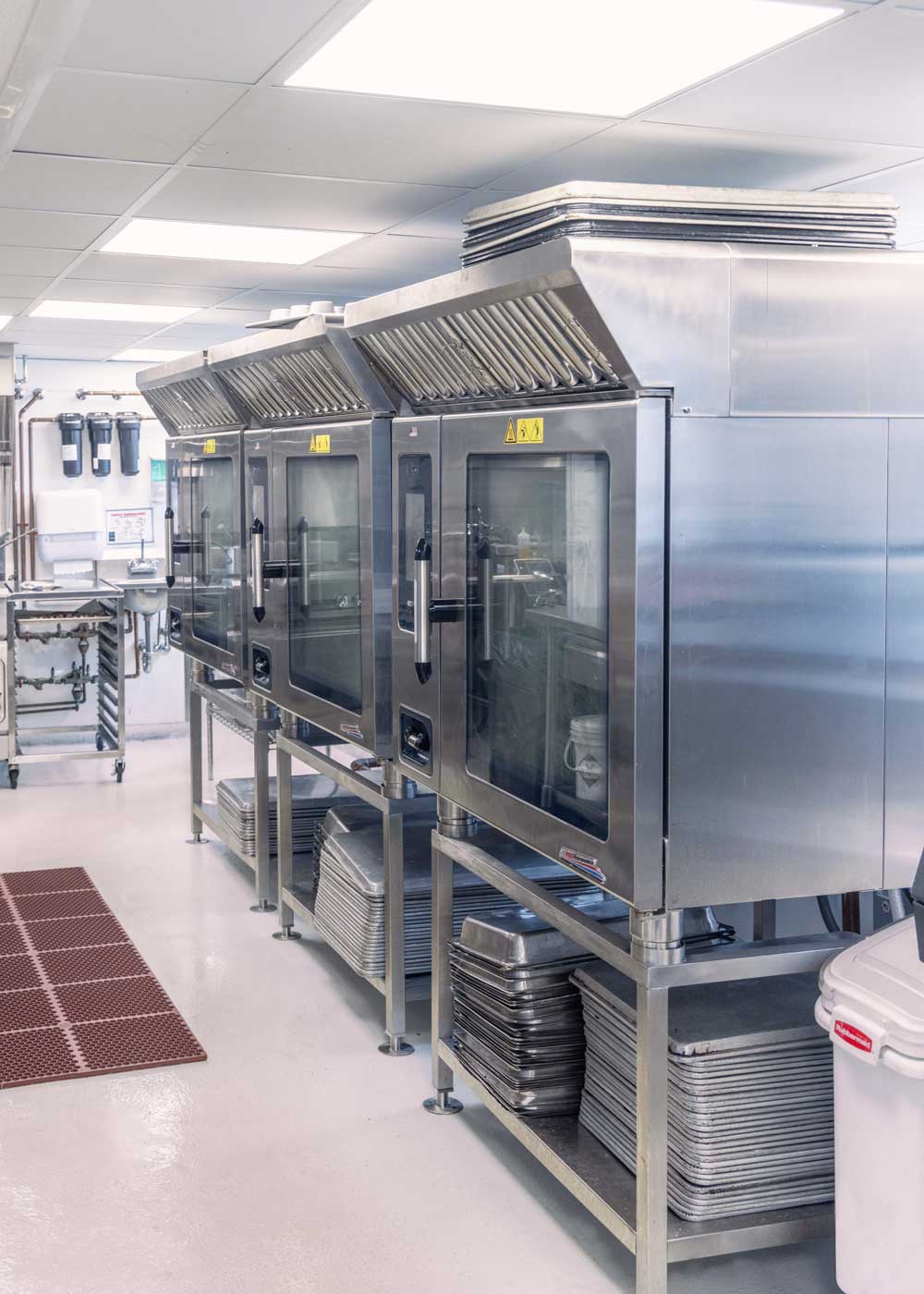
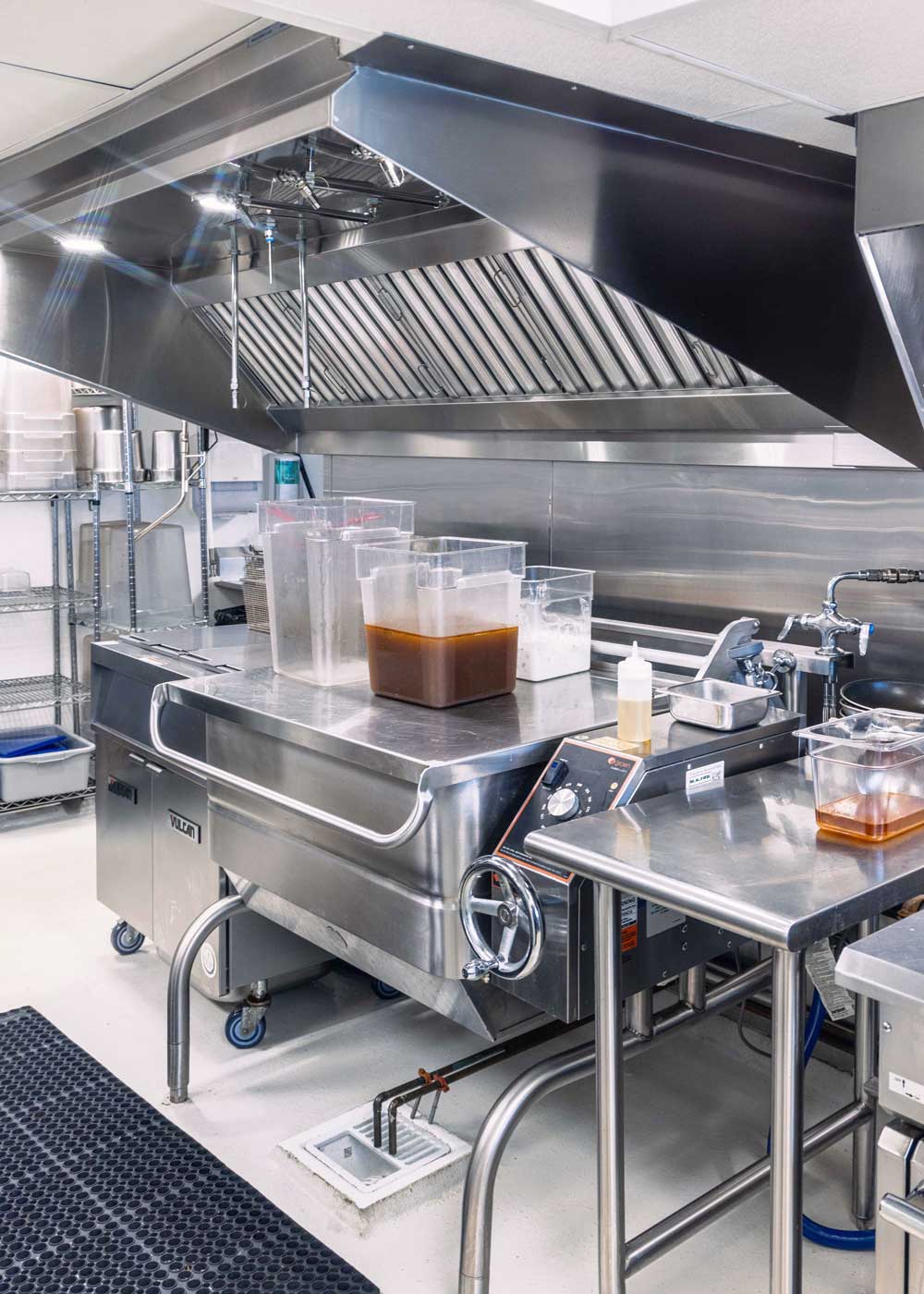
Efficient Workspaces. Ergonomics and efficiency were the priorities when creating the workspaces of the kitchen. With only five feet of space for the beverage station, a custom-built piece allowed Ralph Aylward to strategically place each necessary item for optimal efficiency. Another workspace, the prep area, is one of the highlights of the kitchen. Featuring three big sinks, double troughs and cutting boards, the line-up sits at the large window, giving staff a beautiful view of Navy Pier while they work.


Customized Hoods. Where most canopy hoods extend out two feet past the equipment to pull out all the grease and heat, the short ceiling height would have had staff bumping their heads on a hood that size. Boelter worked with the general contractor to install modified back-shelf ventilators that only come out 30 inches. The tapered hoods are a way to cheat the ceiling height and provide space to work, all while leaving room to attach to the ductwork above.
An Adventurous Installation Process
The prep tables and other fabricated metal workspaces were custom-built onsite. But the ones coming fully assembled from the manufacturer presented a challenge in getting it onto the ship without a traditional loading dock. That’s where the crane came into place. For a few days, Boelter oversaw a process of getting equipment on the ship which included uncrating boxes on the dock and lifting each piece up to the ship’s deck. “It was more time consuming than most jobs because we were putting it up on the ship one piece at a time,” Aylward said. “Lifting it over the water was a bit stressful too, but it all went smoothly. Even the weather cooperated, without any rain through the entire process.”
Making a Better Work Environment
The newly renovated kitchen also saw big improvements on the overall atmosphere in the kitchen. Before, a decades-old HVAC system supplied air through vents in the floor. The system was not equipped to manage the heat and humidity produced by all the equipment in the kitchen. Temperatures often reached up to 102 degrees during peak work times.
To remedy that situation, Boelter worked with the general contractor to install five individual, self-contained wall-mounted air conditioning units on the walls around the kitchen. “It went from being interminably hot to now being one of the best places to work in the city,” Aylward says.
For years, Boelter has worked with the Columbia Yacht Club to also supply tableware and other kitchen and dining supplies. This kitchen renovation provided an opportunity to expand the partnership and make full use of Boelter’s extensive foodservice design, equipment and supply experience. “Being able to use one company for the full range of needs makes things easier on the client, and Boelter and Columbia Yacht Club make a great team,” White says.


